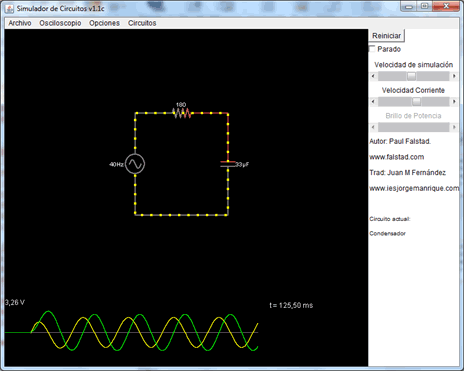Final exercises- Advanced level
[PDF]
The work involves in-depth study of an RC circuit by the student with mathematical model that prove the behaviour of a circuit. The values R, C and w are provided. In other words the student needs to observe the real behaviour of different circuits and discuss the obtained results. The student should do the same with the Falstad simulator. Finally, the student should consult a book or Internet resources to find mathematical models suitable for the provided experiment. The bottom-up process described above empowers the students not only with knowledge but also with skills: testing the examples, discussion of the results in report, and raising a hypothesis that is tested with new examples.
The student can start with research other resources (books, Internet and so on, make the hypothesis, build an experiment and check its validity. This second scenario -top-down approach is easy to execution, but also has less learning benefits than bottom-up one.

Exercise 1: With RC circuits (mathematical model).
Look for the mathematical expressions online (RC model) that determine the effective value of the voltage in the capacitor according to the values of R, C and w. Do the same for the delay, both in time and in radians.
Search online for the concept of low filter and high filter. What type of filter is an RC circuit? Why? Is it easy to observe and to calculate?
Propose an experiment that confirms that you have read online or what you have established.
Write report.
Exercise 2: Change of input
Change the input of the sinusoidal circuit to either a triangular or square one. What is now the effect of the RC circuit? Does it resemble what we have seen for a sinusoidal one?
If the input was sinusoidal, the output was also sinusoidal (smaller and delayed over time). Please make conclusion and prove it.
If the input is a triangular signal, is the output signal also triangular? What is behaviour of the square signal? Please explain.
Search online for ideas related to the Fourier series and try to relate what you find to that observed in the experiments.
Propose an experiment that confirms your working hypothesis based on what you have established.
Write report.